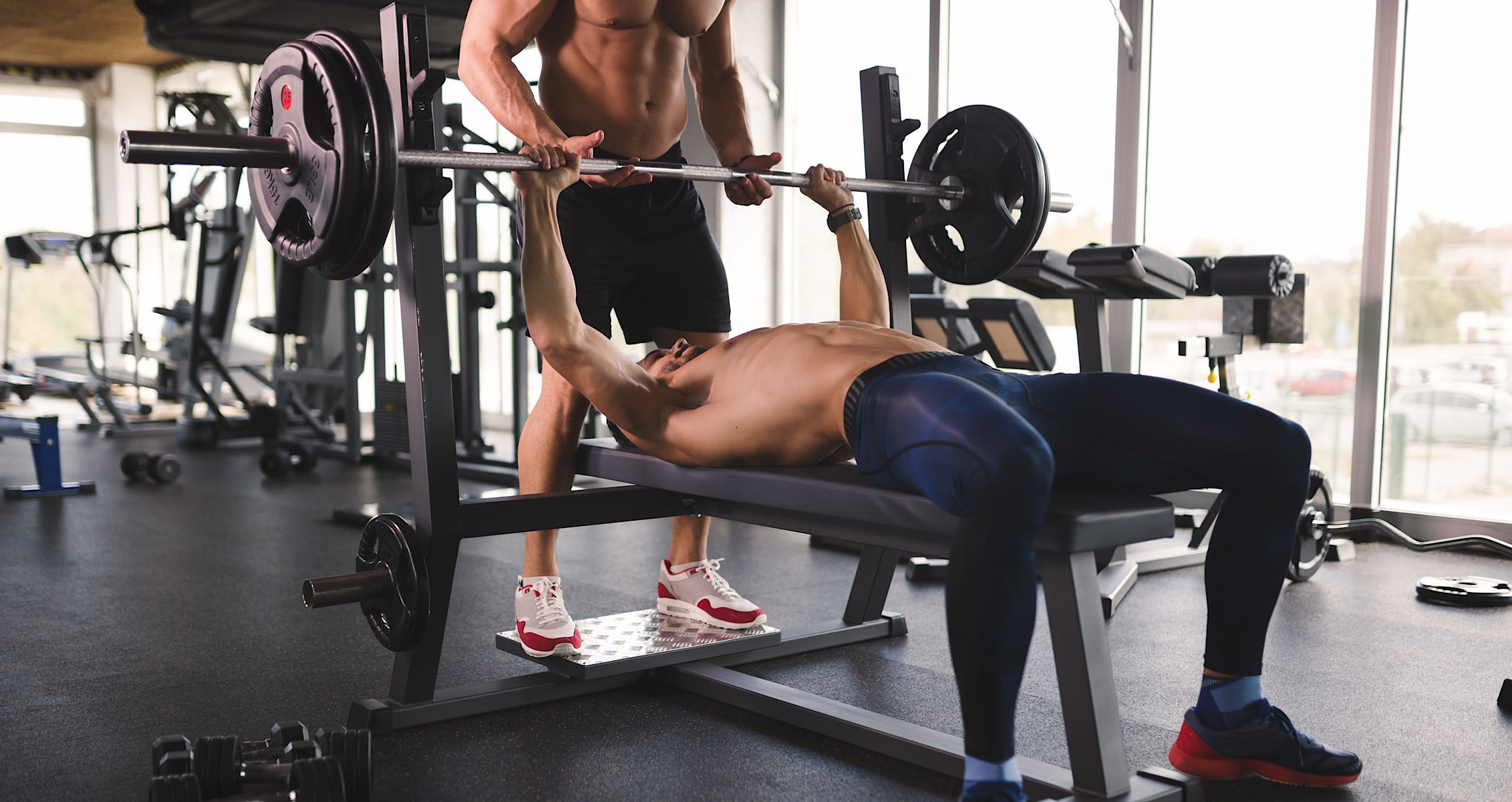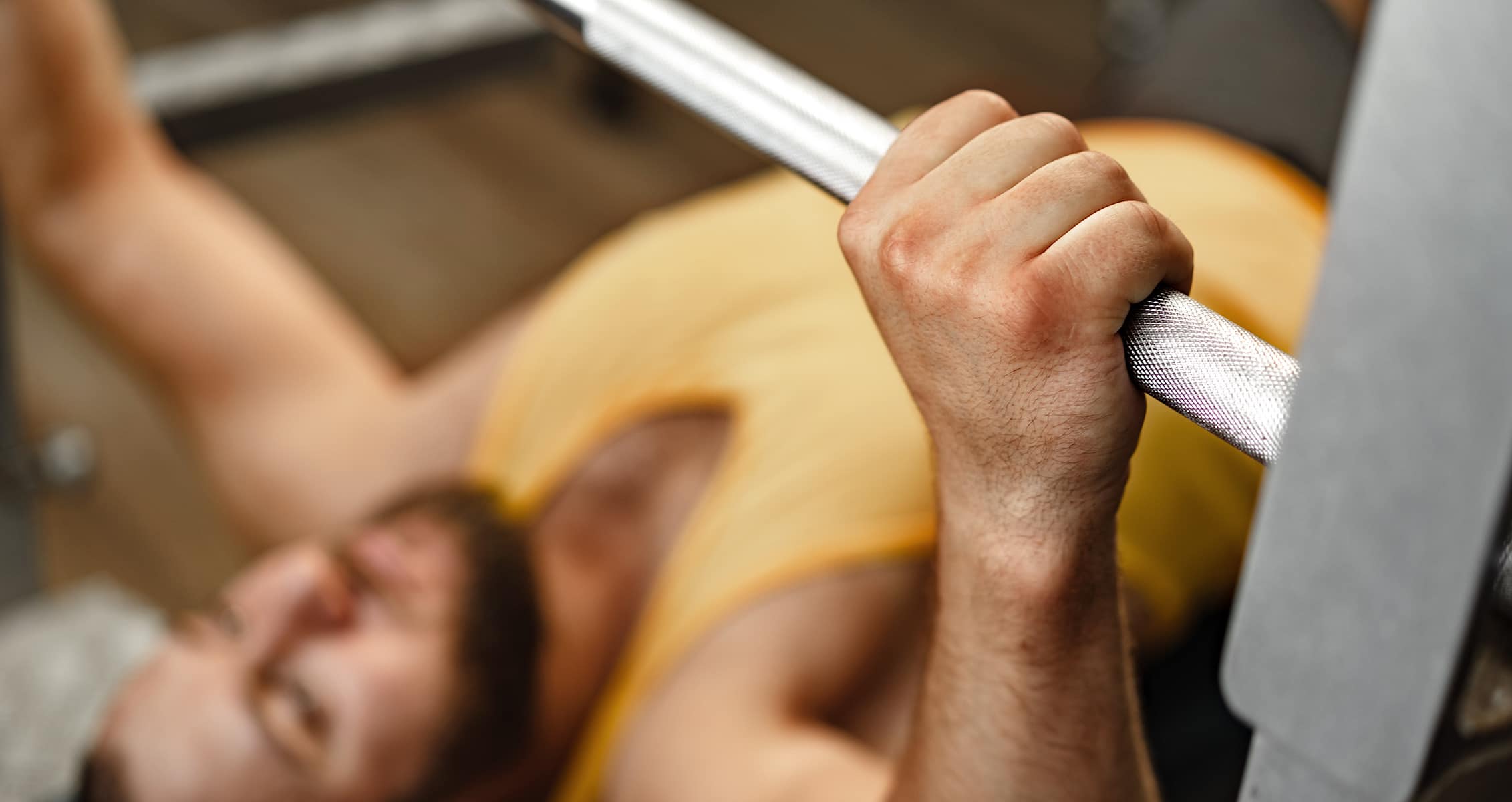The 8-Min Bench Press Warm-Up You Need
The average person loves benching, but hates warming up. And that’s why they’re average. They strut into the gym, do a few half-ass arm swings before slapping 135lbs onto the bar and pumping out some questionable reps.
Lack of preparation breeds a lack of results. And if you’re looking to bench bigger and feel better while doing so, a proper warm-up is non-negotiable.
Why you need to warm-up before benching:
- Maximize your strength potential. Warming up enhances your ability to display your strength by priming the central nervous system (CNS).
- Minimize your risk of injury. As you move through your warm-up, synovial fluid builds up between your joints and acts as a lubricant. Thus, reducing unwanted joint friction and “stiffness” while greatly minimizing your risk of injury.
- Increase muscle fibre recruitment. As noted, your warm-up is an opportunity to prime the CNS, which ultimately leads to greater muscle fibre recruitment. Your ability to push through the concentric phase of the bench press with maximal effort is a result of a primed nervous system. This can only be achieved through an optimal warm-up. Plus, warming up increases your joints’ range of motion. A greater range of motion means greater time under tension and a higher degree of muscle fibres at work.
- Increase core temperature and blood flow. Warming up enhances blood flow and increases core body temperature. It alsoimproves overall core function and stability, which increases your loading potential for the bench press. A stronger core means a stronger bench.

The 8-Min Bench Press Warm-Up (4 Steps)
Step 1: Foam Rolling/SMR (2 min)
Self-myofascial release (SMR) is a warm-up technique involving applied pressure to specific muscle tissues and can be used with a variety of tools including (but not limited to) the foam roller.
Foam rolling increases blood flow to the working muscles involved in your training session and, ultimately, gets you moving. This, in effect, raises your core temperature and primes your muscles for loading.
As Mike Boyle puts it, “When done regularly, foam rolling unties the knots in your muscles by breaking down the adhesions and helping to heal the tissues.”
Grab a foam roller and perform 10 slow rolls per side to the following areas:
- Lower back: Be sure to lay on your side so the roller is not placed directly on your spine. Rather, you want to roll out the muscles along the side of your lower back.
- Triceps: Keep your arm fairly straight and roll along the triceps, between your elbow and armpit.
Be sure to exhale as you apply pressure to these areas and focus on breathing throughout your sets.
Step 2: Mobility (2 min)
Mobility is your joints’ ability to actively move through their intended ranges of motion. Simply put, it’s flexibility in motion.
The bench press places high demand from a mobility-perspective on the thoracic spine (upper back) and shoulders. That said, mobilizing these areas should be an area of high priority during your warm-up.
Perform 10-15 reps per side for each of the following:
- Side Lying Windmill: The objective here is to keep your hips straight while rotating at the upper back and shoulders. Overtime, work to touch the floor as you reach overhead while keeping your arm straight.
- Banded Shoulder Dislocates: This acts as a mobility drill while also aiding in activation of the muscles surrounding the shoulders and upper back. Many Olympic lifters will perform this with a dowel, but the resistance band offers greater flexibility and added tension throughout the movement, making it a great precursor to the bench press.
Step 3: Activation (2 min)
Now it’s time to get the primary muscles involved in the bench press (triceps, upper back, core) activated and primed for loading.
Perform 2-3 sets of each of the following:
- Band Pull Apart: Holding a resistance band at shoulder-height with your arms straight, pull the band apart and focus on contracting your upper back muscles. Slowly bring your arms back to the center while keeping tension in the band throughout the entire set and repeat for 15-20 reps.
- Triceps Extension with Resistance Band: This is meant to increase blood flow to the primary movers of the bench press (the triceps) while preparing the elbows for loading. Do 15-20 reps.
- RKC Plank: The RKC or “hard-style” plank is one of the most effective exercises you can do to strengthen the deep, underlying muscles of the core. It involves maximally contracting every muscle in your body for 5-10 sec at a time while holding the standard plank position. After 5 sec, you “relax” your muscles and continue to hold the plank for 10 sec. Repeat this process 2-3 times for a total of 30-45 sec.
 Step 4: CNS (2 min)
Step 4: CNS (2 min)
Your ability to display strength quickly is a result of priming your nervous system withdynamic and explosive movements prior to lifting. As already mentioned, doing so will increase your total muscle fibre recruitment and result in an explosive concentric phase of the bench press.
You’re not limited when it comes to dynamic movements to perform prior to benching. That said, it’s generally a safe bet to use exercises like explosive push-ups or ballistic throws since they closely mimic the movement of the bench press in a dynamic setting.
Choose one of the following and perform 3-5 reps for 2-3 sets (rest 30-45 sec between).
- Option 1: Med Ball Slam
- Option 2: Explosive Push-Ups
Summary: Putting It All Together
- Foam roll lower back x 10 slow rolls per side.
- Foam roll triceps x 10 slow rolls per side.
- Side lying windmill x 10 per side.
- Banded shoulder dislocates x 10.
- Band pull apart x 15-20 for 2-3 sets.
- Triceps extension x 15-20 for 2-3 sets.
- RKC plank x 30-45 sec (5 sec pull, 10 sec regular hold, repeat).
- Med ball slam or explosive push-up x 3-5 for 2-3 sets.
Prioritize your warm-up and make it a non-negotiable part of training. You’ll feel stronger and reap the rewards because of it.


 Step 4: CNS
Step 4: CNS






